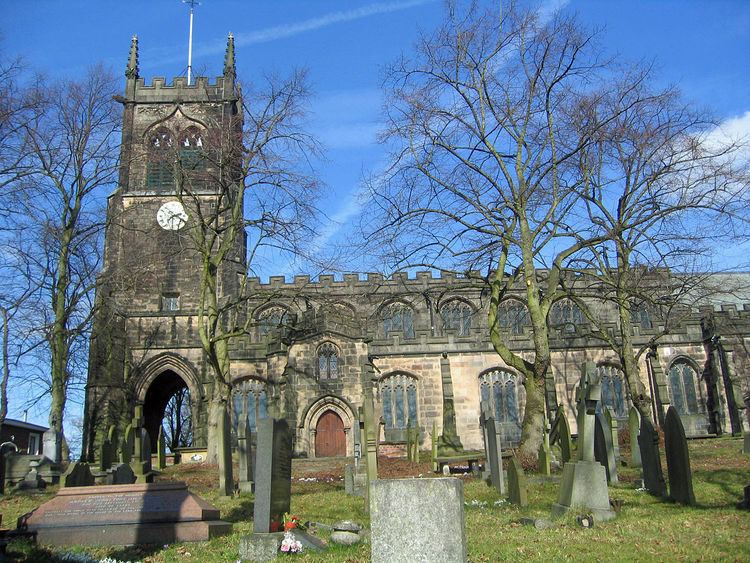OS grid reference SJ 759,608 Country England Churchmanship Central Capacity 400 | Denomination Anglican Opened 1930 Phone +44 1270 762379 | |
 | ||
Address High St, Sandbach CW11 1HD, UK Architects George Gilbert Scott, Sharpe, Paley and Austin Similar St John the Evangelist's Church - S, St Mary's Church - Dodleston, St Mary's Church - Widnes, St John the Evangelist's Church, All Saints Church - Harthill | ||
St Mary's Church is in the town of Sandbach, Cheshire, England. The church is recorded in the National Heritage List for England as a designated Grade II* listed building. It is an active Anglican parish church in the diocese of Chester, the archdeaconry of Macclesfield and the deanery of Congleton.
Contents
History
The Domesday Book (c. 1086) records the presence of a priest and a church on the site of the present church, and it is shown on an 1840 map of the town centre of Sandbach. This was replaced by another church erected about the time of Henry VII. This church was built in sandstone which became badly weathered. The present church dates largely from the considerable degree of rebuilding by Sir George Gilbert Scott in 1847–49. Much of the existing fabric was replaced and the remaining fabric was encased in new stone. The east end of the church was extended by some 40 feet (12 m) and the tower was rebuilt as a copy of the former tower. The builders were Cooper and Son of Derby. The stone, which came from quarries in the Mow Cop area, was given by Sir Philip Grey Egerton M.P. Part of the west end had to be repaired in 1894–95 following a fire. In 1930 Austin and Paley added a choir vestry, and a north porch, at a cost of £1,331. The parish registers date from 1562 and are complete. The churchwardens' accounts prior to 1888 are lost.
Exterior
The plan of the church consists of a clerestoried nave and a choir of five bays, with aisles, side chapels, and a tower at the west end. The choir vestry projects from the northwest. The tower is unusual in that it stands on three open arches through which passes a public footpath. The style is mainly Perpendicular and some medieval masonry is still present in the arcades.
Interior
The font dates from 1859; it is made of Caen stone and was constructed by Thomas Stringer. It has a Greek Palindrome inscription, that reads "NIYON ANOMHMA MH MONAN OYINE". This translated means "Wash my sin not my countenance only". The old octagonal font dated 1669 and decorated with acanthus leaves, was returned to the church in 1938. Scott arranged the memorials around the walls of the aisles. One of these is a marble relief to the memory of Rev. John Armistead, who was vicar from 1828 to 1865. It was designed by G. F. Watts and sculpted by George Nelson in 1876. Another is to John Ford, who died in 1839, which includes a life-size allegorical female figure by an altar. The roofs are dated 1661. The roof over the north aisle includes a large coat of arms in a wreath. In the chapels and chancels is stained glass by William Wailes, and in the north aisle is a window by Kempe.
Bells
There is a ring of eight bells. Four of the bells were cast by Abraham II Rudhall in 1719, and a bell dated 1782 is attributed to Thomas Rudhall. Three later bells by John Warner and Sons are dated 1857, 1858 and 1868.
Rectors c.1100–1256
Vicars c.1300–1887
Sources c.1100–1865. Sources: 1919–1983.
